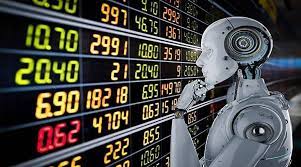In the fast-paced realm of foreign exchange (forex) trading, staying ahead of the curve often means embracing innovative technologies. Among these technological marvels are forex robots – automated trading systems designed to execute trades on behalf of forex robot. Over the years, these robots have garnered attention for their potential to streamline trading processes, but they also come with their own set of complexities and considerations.
Understanding Forex Robots
Forex robots, also known as expert advisors (EAs), are software programs that employ predefined trading algorithms to analyze the market, identify trading opportunities, and execute trades automatically. These algorithms are based on various strategies, ranging from simple moving average crossovers to more complex mathematical models.
The appeal of forex robots lies in their ability to trade around the clock without emotional interference. Unlike human traders who may fall victim to fear, greed, or fatigue, robots stick to their programmed rules diligently, potentially eliminating costly human errors.
Advantages of Forex Robots
- Emotion-Free Trading: By eliminating emotional decision-making, forex robots can help maintain discipline and consistency in trading strategies.
- 24/7 Market Monitoring: Forex robots can continuously scan the market for trading opportunities, even during hours when human traders may be unavailable.
- Backtesting and Optimization: Traders can backtest their strategies using historical data to assess performance and optimize parameters before deploying them in live markets.
- Diversification: With the ability to trade multiple currency pairs simultaneously, forex robots offer traders opportunities for portfolio diversification.
Challenges and Considerations
- Over-Optimization: While backtesting is essential, it’s crucial to avoid over-optimizing strategies to fit historical data perfectly, as this may lead to poor performance in live markets.
- Market Conditions: Forex robots may struggle to adapt to changing market conditions, particularly during periods of high volatility or unexpected events.
- Lack of Human Judgment: Algorithms can’t account for qualitative factors or unforeseen events that may impact currency prices, potentially leading to losses.
- Cost and Complexity: Developing or purchasing a forex robot can incur costs, and understanding how to configure and optimize it requires technical expertise.
Selecting a Forex Robot
When choosing a forex robot, traders should consider several factors:
- Strategy: Determine whether the robot’s trading strategy aligns with your risk tolerance and investment goals.
- Performance: Evaluate the robot’s track record through backtesting and live trading results, looking for consistent performance over time.
- Customization: Ensure the robot allows for customization and parameter adjustment to adapt to changing market conditions.
- Support and Updates: Opt for robots offered by reputable developers who provide ongoing support, updates, and transparency regarding their products.
Conclusion
Forex robots represent a powerful tool in the arsenal of modern traders, offering the potential to automate and streamline trading processes. However, they are not without risks and complexities. Success with forex robots requires a thorough understanding of market dynamics, robust risk management practices, and continuous monitoring and adjustment.
As with any trading tool, forex robots should complement, rather than replace, human judgment and strategic decision-making. When used wisely, forex robots can enhance efficiency, mitigate emotional biases, and unlock new opportunities in the dynamic world of forex trading.
